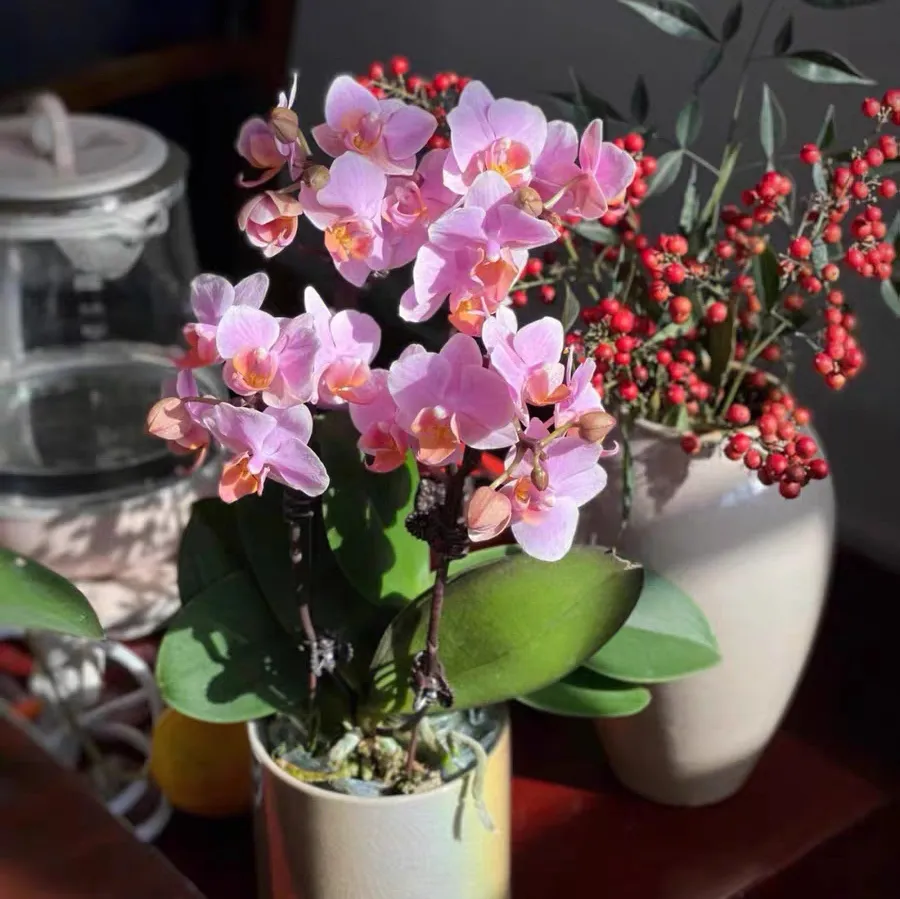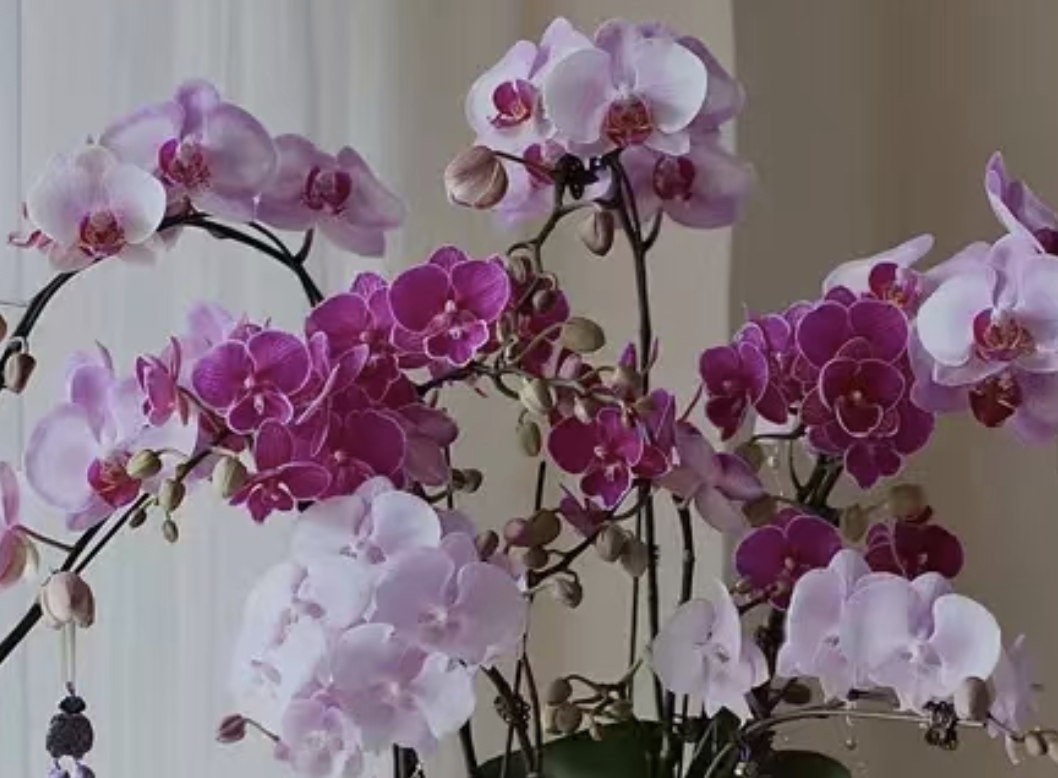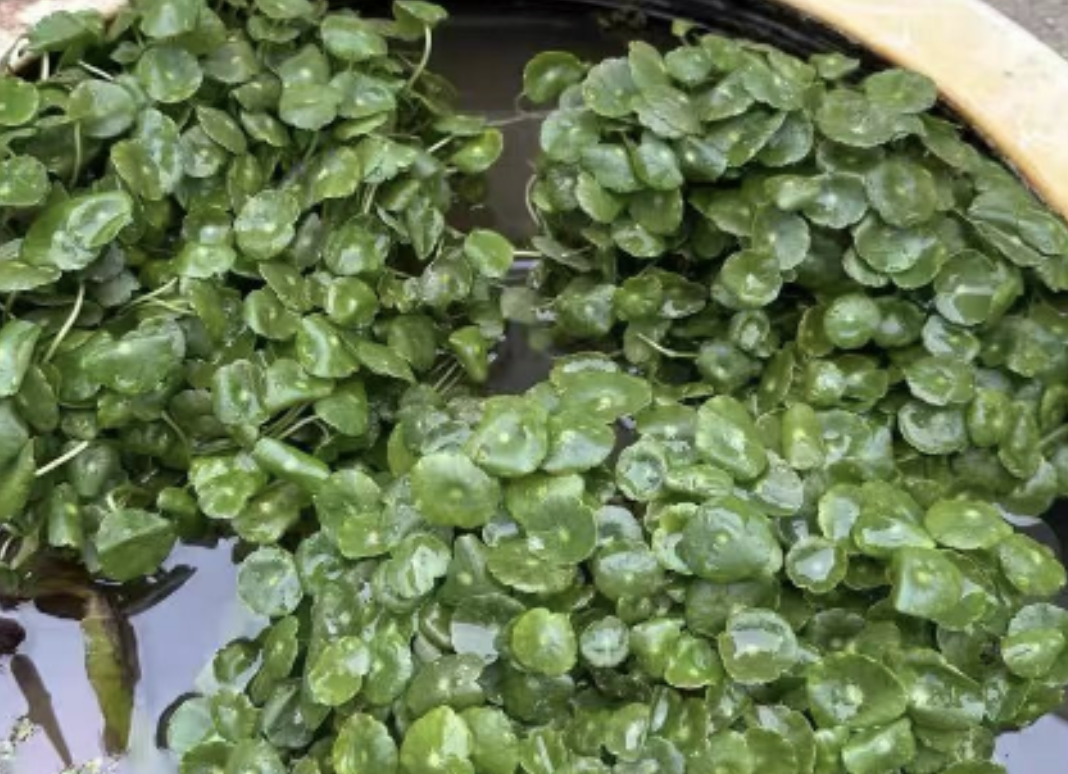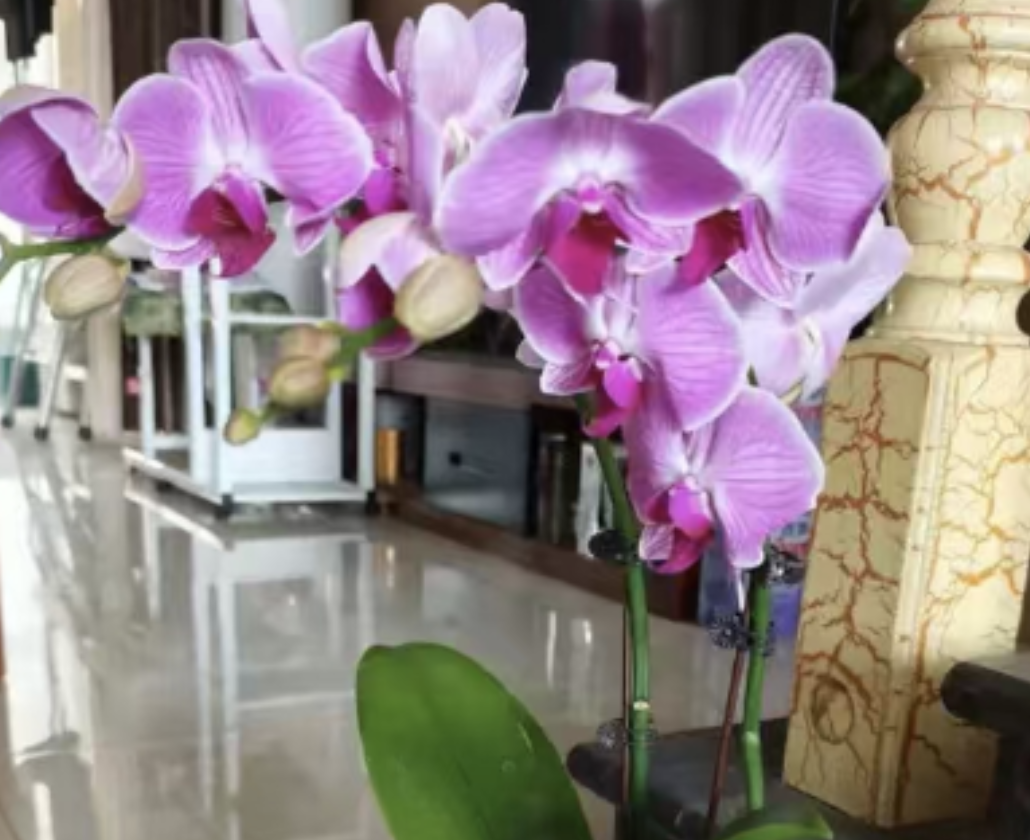Many flower enthusiasts want to try hydroponic cultivation of Phalaenopsis but often fail in the initial stage. In fact, the problem often lies in the step of "root cleaning"! The core difference between hydroponics and soil cultivation is the change in the root environment. If the untreated roots carry old growing media and pathogens, direct hydroponics can easily lead to root rot and wilting. Today, I will share in detail the root cleaning steps and precautions for hydroponic Phalaenopsis. Mastering these steps will ensure that your hydroponic Phalaenopsis has robust roots and grows healthily for a long time~
## 1. Removing from Soil and Cleaning Roots
The first step in hydroponics is to free the roots from the constraints of the old environment, preventing residual growing media from polluting the water quality or hindering respiration.
**Operation steps**:
1. Gently remove the original growing media (sphagnum moss, bark, etc.) from the Phalaenopsis. If the media is tightly缠绕, use tweezers to carefully peel it off to avoid damaging healthy roots by pulling.
2. Prepare room-temperature water (tap water needs to be exposed to air for 1-2 days in advance to remove chlorine). Put the roots in the water and rinse gently, focusing on cleaning the residual sphagnum debris, soil, or rotten tissues in the gaps between the roots to ensure no impurities adhere to the root surface.
**Note**: Be gentle when cleaning the roots; avoid rubbing healthy roots vigorously. If there is a small amount of tight sphagnum on the roots, you can retain the part close to the root base. Excessive cleaning may damage the germination points of new roots.
## 2. Trimming and Disinfecting Roots
After cleaning the roots, trimming and disinfecting them is essential. This is a core step to prevent root rot in hydroponics and directly affects the subsequent survival rate.
**Operation steps**:
1. **Trimming roots**: Place the cleaned roots in a ventilated place to air-dry slightly until the surface moisture is almost dry. Use sterilized scissors (wiped with alcohol cotton or scalded with boiling water) to cut off all dead roots, black rotten roots, and hollow roots (roots that are brown, soft, and lusterless). Retain healthy roots that are white or light green, plump, and elastic. The cuts should be flat and smooth to avoid leaving torn root tissues.
2. **Disinfecting**: Dilute carbendazim solution (or other orchid-specific fungicides) at a ratio of 1:1000. Fully immerse the trimmed roots in the solution for 15-20 minutes to ensure all roots and cuts come into contact with the liquid.
3. **Drying**: After disinfection, take out the roots and place them in a cool, ventilated place to air-dry naturally for 2-3 hours until the root surface is slightly moist and the cuts shrink and wrinkle. Avoid direct sunlight or prolonged exposure to prevent root dehydration.
**Note**: When trimming, it's better to cut less than too much; try to retain as many healthy roots as possible. The roots must be dried after disinfection; roots that are not dried before being put into water are prone to bacterial growth, leading to rot.
## 3. Planting and Adding Water
After trimming and disinfection, correct planting and water level control are the final steps for successful hydroponics, determining whether the roots can breathe and absorb water normally.
**Operation steps**:
1. **Choosing a container**: Select a wide-mouth container (glass jar, ceramic bottle, etc.), either transparent or opaque. The container must be cleaned with water and dried in advance to ensure no oil stains or pathogens remain.
2. **Planting and fixing**: Place the Phalaenopsis in the center of the container, allowing the healthy roots to spread naturally without tangling. If the plant is unstable, put clean ceramsite, pebbles, or a planting basket at the bottom of the container to gently fix the base of the plant. Be careful not to press or cover the roots.
3. **Controlling water level**: Slowly pour in room-temperature water. The water level should submerge 1/3-1/2 of the healthy roots. It is absolutely forbidden for the water level to exceed the bottom of the pseudobulb (the swollen part at the base of the leaves; immersion can cause rot). Ensure that some roots are exposed to the air for breathing.
**Note**: In the initial stage, keep the water level rather low than high. In the first 1-2 weeks of hydroponics, you can maintain a lower water level (submerging only 1/3 of the roots), and gradually adjust it after the roots adapt to the water environment. The container should be placed in a well-ventilated area with scattered light to avoid direct sunlight, which can cause the water temperature to rise.
## Tips for Initial Hydroponic Care
After cleaning, planting, and setting up, it's not a one-time task. Special attention should be paid to maintenance in the first 2-3 weeks:
- Observe the root condition daily. If the water becomes turbid, or the roots produce mucus or turn black, replace the water in time and check for any uncleaned rotten roots.
- Do not fertilize initially. Wait until the roots adapt to the water environment (new roots germinate or existing roots become plump after about 2 weeks), then add a small amount of diluted hydroponic fertilizer according to the instructions.
- Keep the environment ventilated. Open windows for ventilation or use a small fan to blow gently every day to reduce the risk of pathogen growth. At the same time, avoid direct air conditioning or cold wind.
What causes root rot in hydroponic Phalaenopsis orchids?

Share with
Tagged in :




Leave a Reply